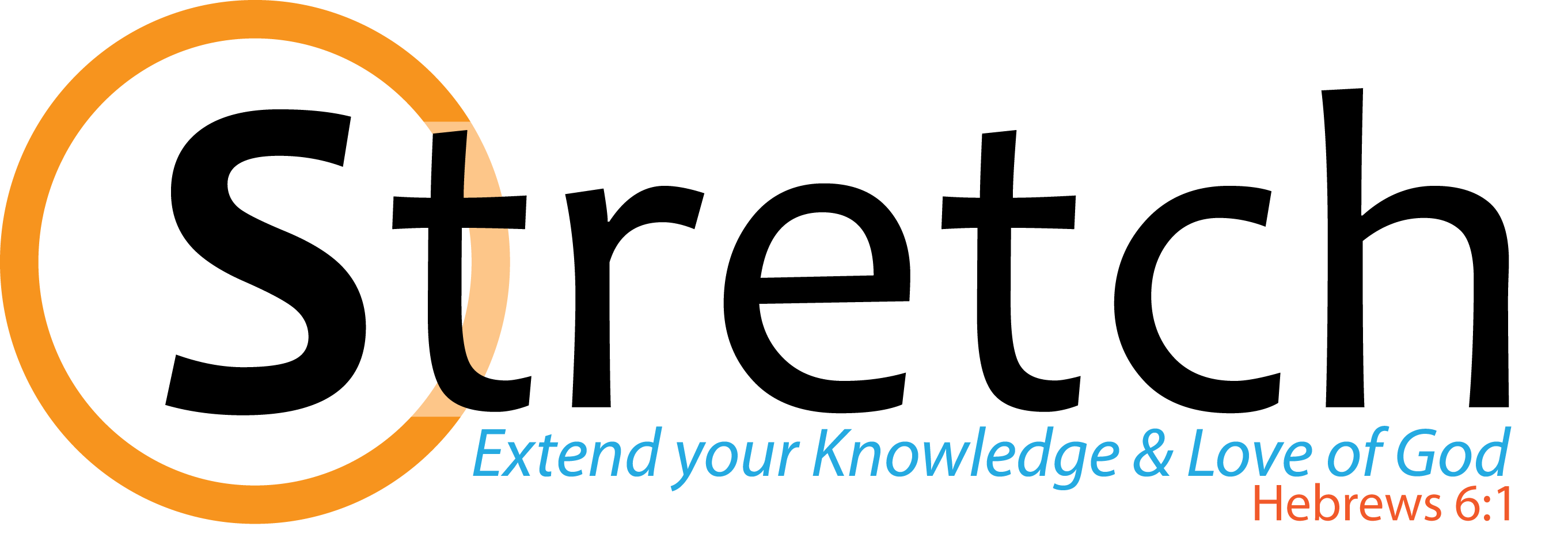Years ago I was teaching a high-school biblical studies class about Exodus 19, the occasion when Israel first meets God at Sinai. The class was struck by how terrifying God was to his people, appearing on the mountain in smoke and fire, and speaking words that they could not bear to hear. The students were familiar with the gospel and that in Jesus Christ God had come near to save us. To them this experience at Sinai seemed like a different religion, and a significantly more confronting one. They asked “why is God so unapproachable?”
It’s a good question and I wanted to give a good answer. I realised that the Tabernacle was God’s answer to that question so it gave me an excuse to build a scale model of it (yay!).
The Tabernacle was a large tent that stood in the middle of Israel’s camp during their wilderness travels. Technically ‘Tabernacle’ refers specifically to the tent which is surrounded by a courtyard, but the word often refers to the entire thing.
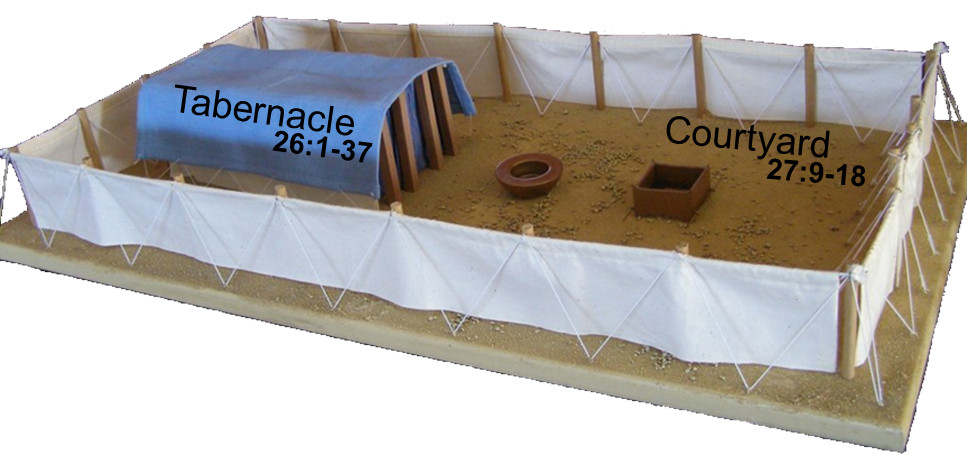
‘Tabernacle’ means ‘dwelling’. It was God’s place of residence among his people. The Tabernacle is described in great detail in the book of Exodus. In fact it is described twice, first in the form of plans (25-31) and then in its order of construction (35-40):
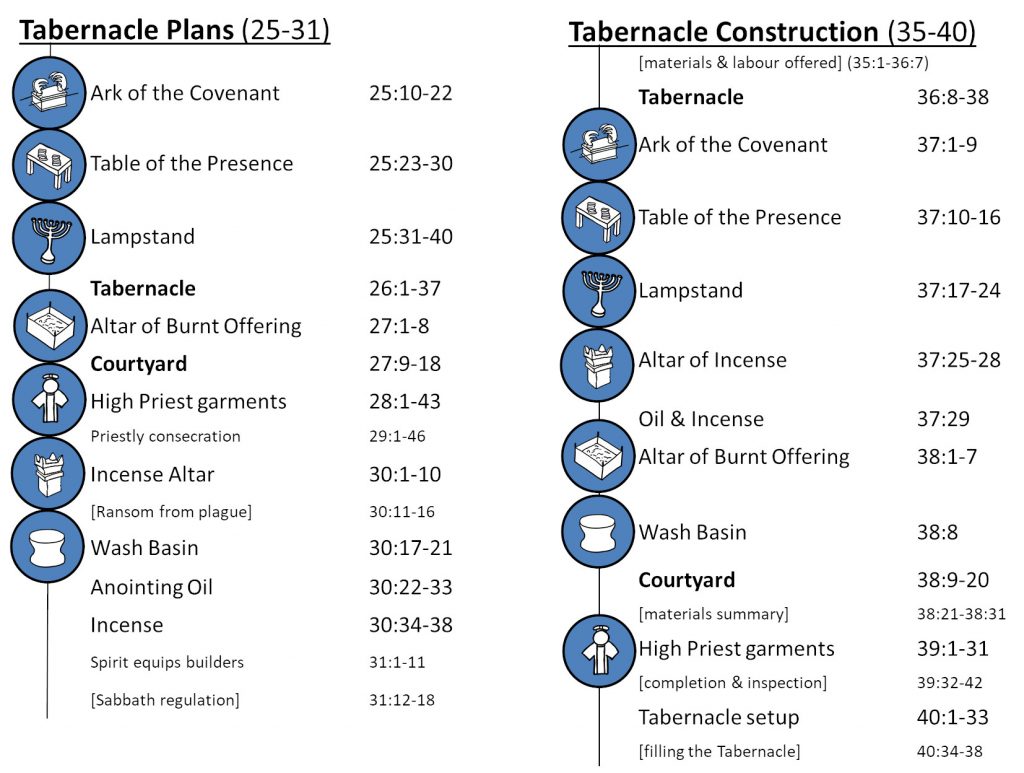
The amount of detail the Bible gives us about the Tabernacle is no accident. It’s meaning and significance are expressed in the details of its layout, materials, and ceremonies. The Tabernacle was supposed to be seen and experienced in order to be understood. Hence the value of a model. My model lacks various details described in Exodus but it is accurate enough to give a sense of how it worked. Nonetheless, I feel the need to preface my explanation in the same way as Doctor Brown:
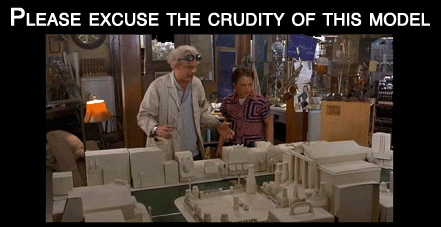
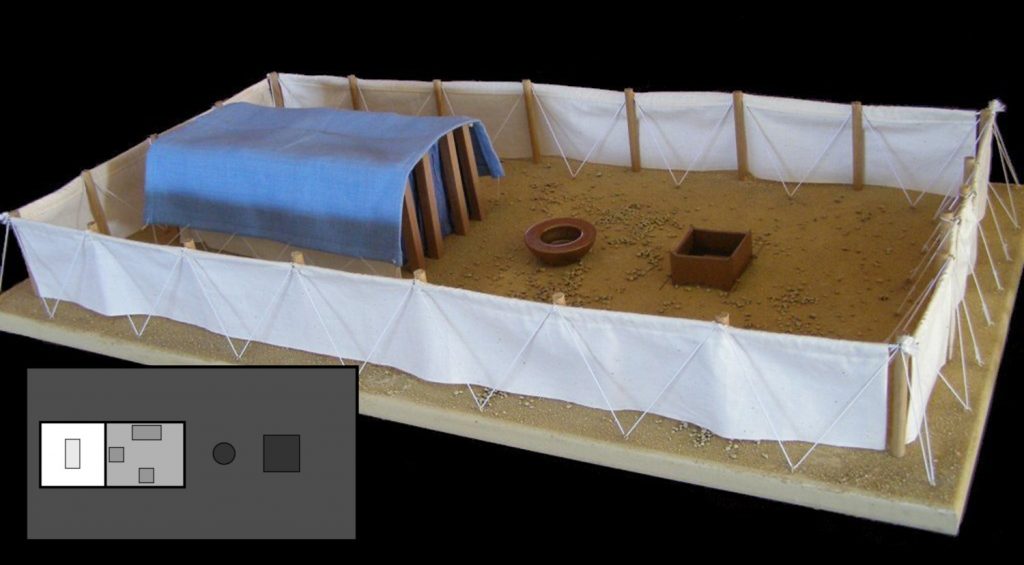
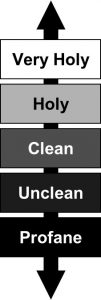
You’ll notice the inset diagram of the Tabernacle layout is shaded in gradations from grey to white. What this represents is that Israel was taught to view the Tabernacle (and indeed, all of creation) as representing varying degrees of cleanliness. The holiness metre (or, as I prefer to call it, the ‘sanctomonometre‘) on the left shows these degrees of cleanliness as taught in Exodus and Leviticus. This way of viewing God and the world is absolutely foundational to the teaching of the Bible as a whole.
We’ll explore some of the theological significance of this in the next post. For now it is enough to recognise that the Tabernacle is structured according to these graduations of holiness. Just as it gets hotter when you move closer to a fire, the environment must be more holy as you come close to God’s presence. The Tabernacle reflects this principle through the materials and quality of workmanship of each section of its three sections, as well as who has access.
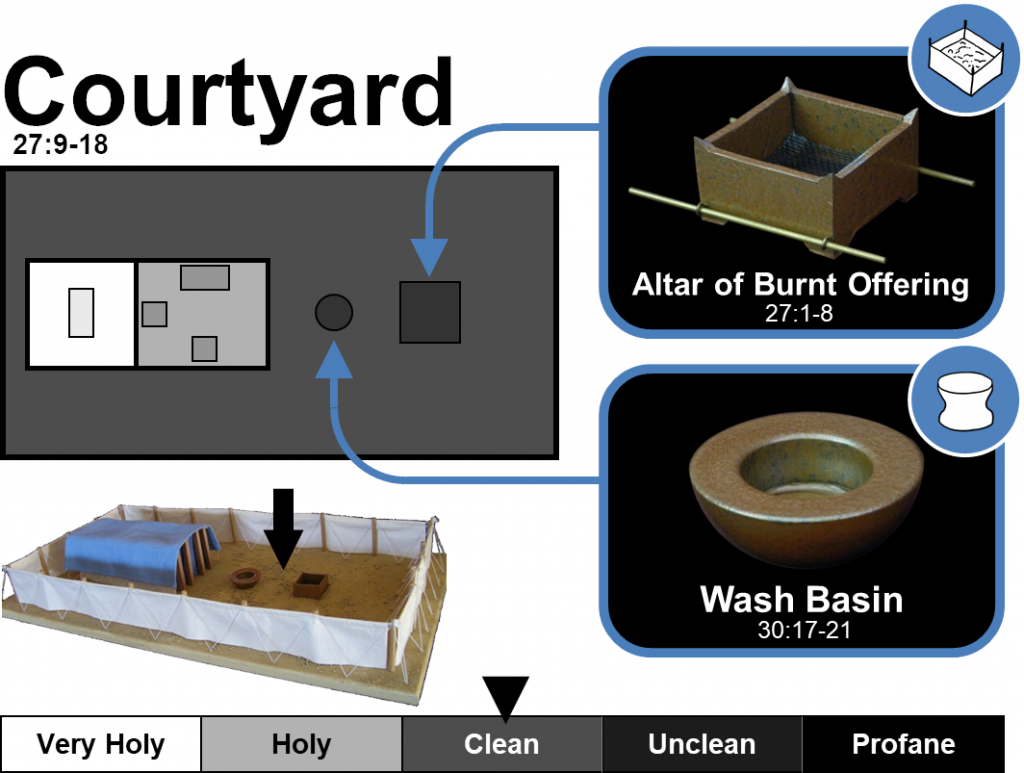
The courtyard was ceremonially clean. The fabric were all one type of thread with no embroidery. The furniture and utensils were mainly bronze; there was some silver but no gold.
The altar was used to offer sacrifices that would cleanse sinners, turn aside (propitiate) God’s wrath toward Israel, cleanse the Sanctuary from sin’s pollution, and express thanksgiving to God (Leviticus 1-7, 16). The basin was primarily used for priests to cleanse themselves before coming into the sanctuary (31:17-21)
Ordinary Israelites could enter here with sacrificial animals, but this area was dominated by the Levites, the tribe of Israel set aside by God to manage the Tabernacle (Numbers 1:47-53).
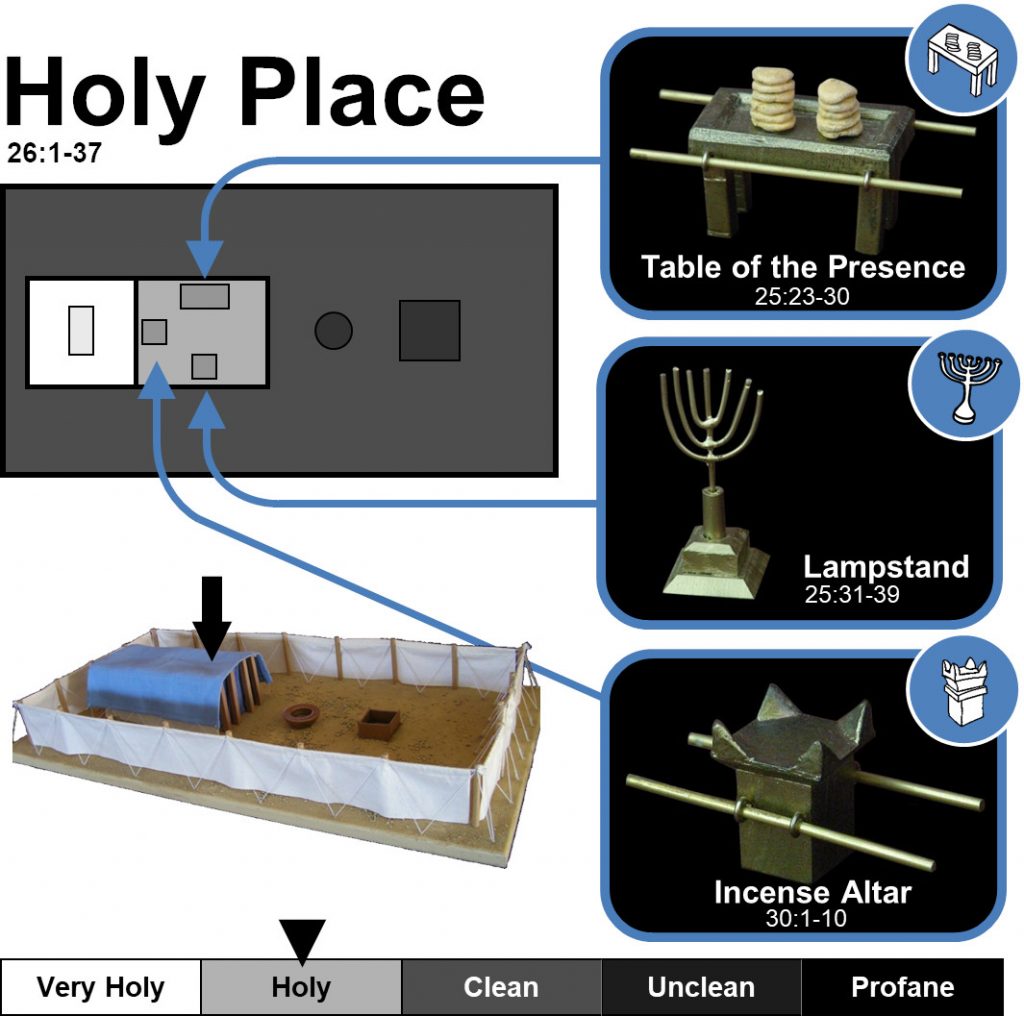
The first section of the Tabernacle was the holy place. It’s fabrics were better quality, had better workmanship, and included embroidery. It’s furniture and utensils were gold. Only the priests of the tribe of Levi could enter here in order to tend to their daily duties.
The table containing 12 loaves of bread represented the fellowship Israel had with God (recalling the covenant meal of 24:9-11). The ornate lampstand provided the sole light-source inside the Tabernacle and was to remain alight when the sun was down (27:21). The incense altar burned a unique incense inside the holy place (30:7-8).
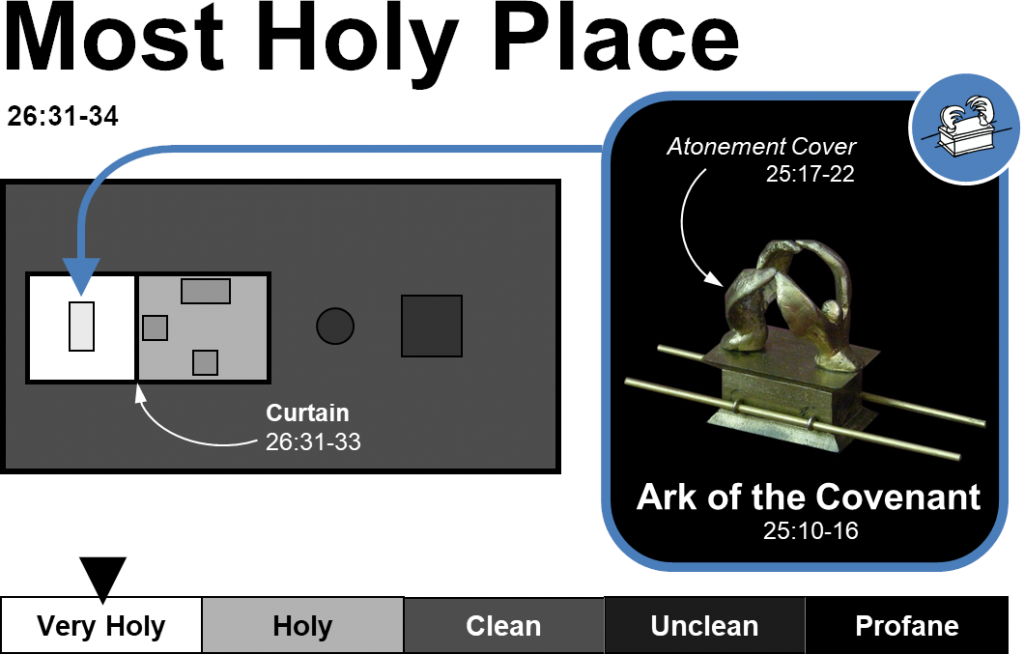
The inner room was the most holy place of the Tabernacle. It used fabrics with multiple dyed wools and fine embroidery of the best workmanship. The furniture, pillars and hooks were gold, with some silver but no bronze. Only the high priest could enter here, and he only did so once per year and with the greatest precaution (as we’ll see when we look at the Day of Atonement).
The only item of furniture in here was the Ark of the Covenant, a wooden box overlaid with gold with an impressive solid-gold cover on top. The poles remained permanently attached since no sinful human being was to touch what this holiest object in the world (25:15; 2 Samuel 6:6-7). This is as close as a human being could come to God’s presence on earth.

The priests were dressed as though they were part of the furnishings of the Tabernacle, because essentially they were. The priests represented the people before God. Their main job was to maintain the holiness of Israel through sacrifice.
So why is God so unapproachable? And how does the Tabernacle answer that question?
We’ll find that the Bible has several exciting answers to those questions in our next two posts.
